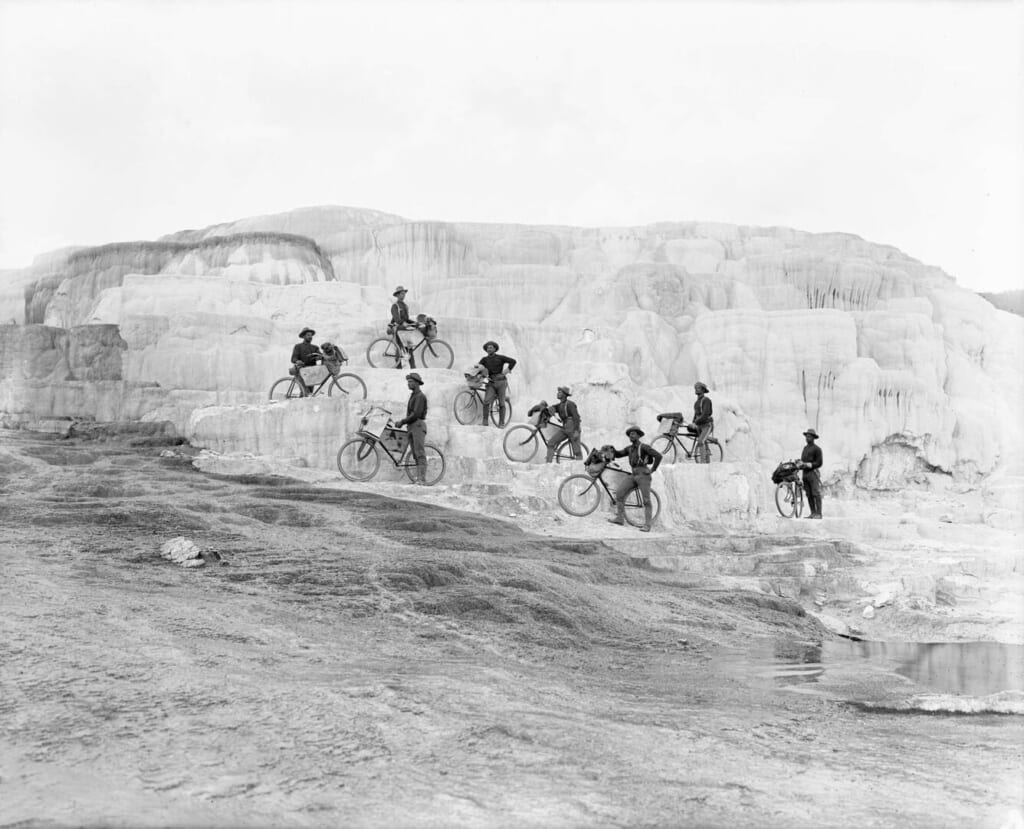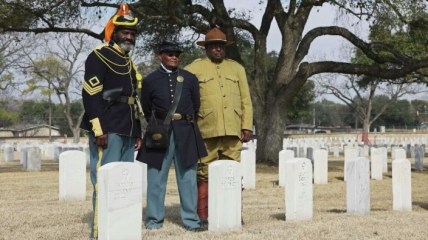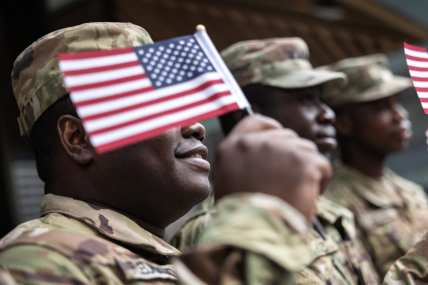Bicycle Nomad and others recreate 1,900-mile ride of Buffalo Soldier Bicycle Corps
Erick Cedeño was among scores of reenactors and historians who embarked on the cross-country trek from Montana to Missouri.
Erick Cedeño received a hero’s welcome when he rode his bicycle into the front drive of the Missouri History Museum on Sunday after a 1,900-mile, 41-day odyssey.
The 48-year-old, known as @bicycle_nomad on Instagram, had completed an epic feat in honor of another epic feat achieved exactly 125 years before, the St. Louis Post-Dispatch is reporting today.
Cedeño was among scores of reenactors and historians who embarked on the cross-country trek from Montana to Missouri, sticking as closely as possible to the route of their predecessors, the Post-Dispatch reported last week.

Their predecessors — 20 Black U.S. Army soldiers known as the Buffalo Soldier Bicycle Corps of the 25th Infantry — set out on “The Great Experiment” on bicycles donated by Spalding Co. in a heavy rainstorm on June 14, 1897. It was a 1,900-mile journey that ended 45 days later on July 24, 1897, in Forest Park, the site of the history museum. Cedeño’s ride was four days shorter.
“It’s so epic, what they did,” Cedeño said Sunday to the people gathered at the museum. “I’m so emotional because it was such a hard trip. It’s almost superhuman what those guys accomplished.”
According to the report in last week’s Post-Dispatch, the Army’s experiment was to ascertain whether crossing the country would be easier by bicycle rather than by horse. The Buffalo Soldiers — so named depending on who’s telling the story for their dark, curly hair or fighting style — faced harsh conditions.
They walked their 32-pound bikes through thick, gumbo-like mud as well as across mountains and on sandhills. They forded rivers and streams. Mosquitoes and bad water were also problems. Further, they encountered racism, which was greater in Missouri.
Bobby McDonald of Anaheim, California, the Post-Dispatch reported last week, is one of the main organizers of events commemorating the bicycle trek. His father and four uncles were Buffalo Soldiers during World War II. He served in the Navy during Vietnam and has a replica Iron Riders (a nickname of the soldiers) uniform and bicycle.
He biked five miles in June in Missoula, Montana, with 40 other reenactors and reports that it stopped raining about 10 minutes before their departure. “There were no roads,” back then, he said. “It rained, it snowed, it sleeted — all that stuff on them. Sometimes when they rode on railroad tracks, there was no bottom, or rocks or gravel to take the absorption.”
Matt Lautzenheiser, the executive director of the Historical Museum at Fort Missoula, a marathoner and a reenactor, told the Post-Dispatch that the story of the Buffalo Soldiers is one that should definitely be told.
“I think it’s a really positive story revolving around African American history. Traditionally, those stories weren’t told,” he said. “It helps us move forward as a country and as a nation if we can tell all of our stories, and we’re not just telling select stories.”
TheGrio is FREE on your TV via Apple TV, Amazon Fire, Roku and Android TV. Also, please download theGrio mobile apps today!


